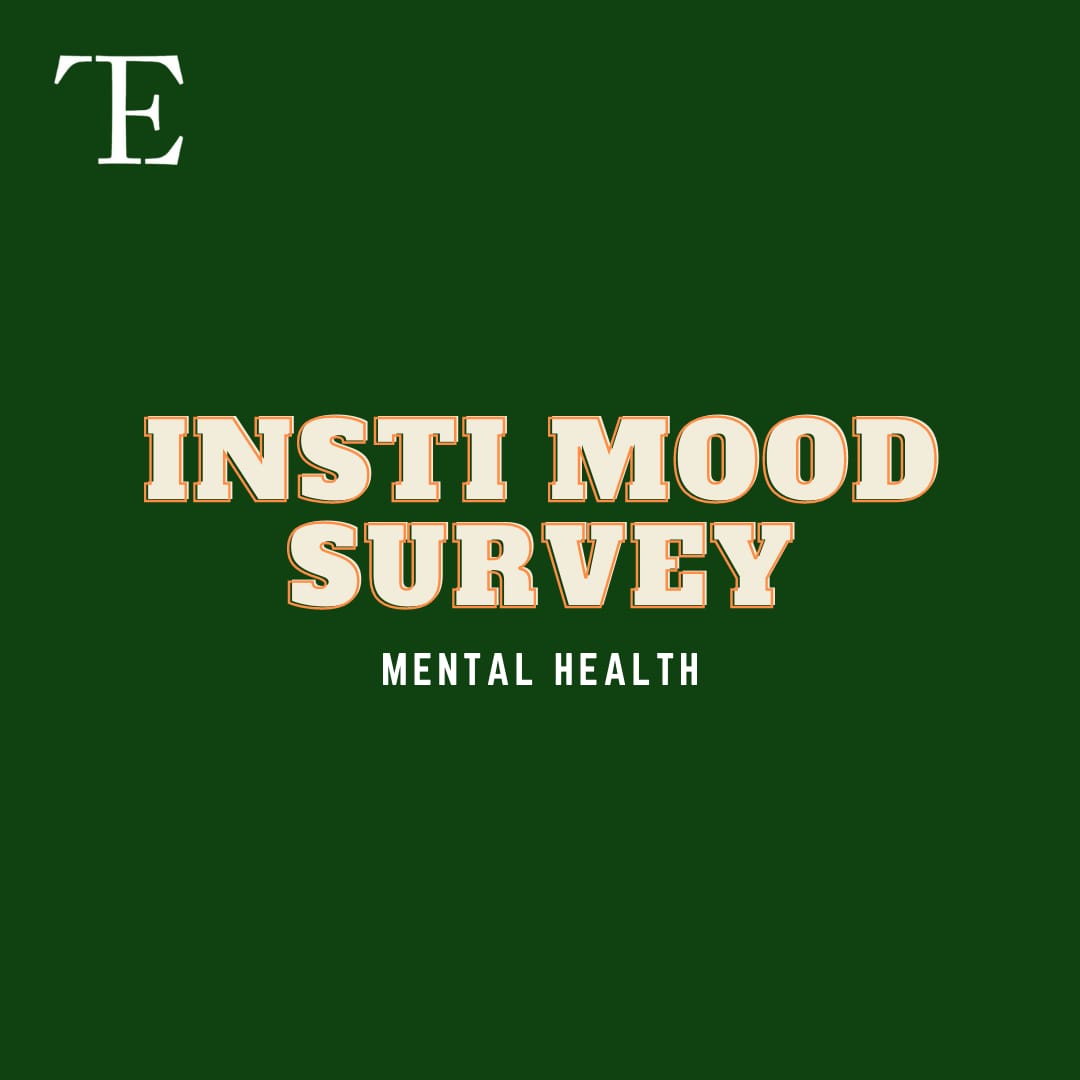Note: T5E’s Insti Mood Survey 2021 was conducted in September to study the current lived reality of institute students. The survey received a total of 1306 responses with representation (albeit skewed) from all degrees and batches. The aspects studied by the survey are Academics, Co-Curriculars, Opinion, Mental Health, Physical Health and time and At-home-life.
This part of the survey attempts to measure the feelings of mental well-being among students through a set of subjective questions.
Demographics
Before proceeding with the article, the charts below outline the demographics of the respondents of this survey. These charts are key to understanding why we got the results that we did, especially for questions that depend heavily on one’s batch/degree. In particular, note that PGs are underrepresented in relation to UGs and older batches are underrepresented in relation to newer batches, especially 2021 and 2020 batches.
Mental Health Rating
The average mental rating of all students stands at 2.77/5 and the distribution of mental health ratings is quite consistent across all batches. Notably, 42% of all respondents gave ratings less than 3 for their mental health.
Though mental health ratings are quite consistent across batches, the 2021 batch report to have a marginally better mental health.
UG students are heavily represented at the lower end of the scores with a striking 18% B.Techs rating their mental health 1/5, followed by 13% Dual Degree and 12% MA students reporting the same. At the other end of the spectrum, only respondents of two degrees - MBA and PhD - have a double-digit representation in the 5/5 group. Again, very few UG students reported this score: 6% of BTech and Dual degree students and 1% of MA students.
Correlations with Mental Health
We looked for correlations between respondents’ mental health and whether they had a personal room at home or the number of PoRs they held. Interestingly, however, neither of those factors had a notable bearing on mental health.
We also looked at the relationship between respondents’ mental health rating and their productivity rating by computing the average and standard deviation (a measure of spread around the average) of the productivity ratings within that group. The trend is quite clear: People with better mental health are more productive, but this relationship possibly goes both ways - feeling productive improves mental well-being and vice versa.
Another way to look at it could be that being in a bad state of mind can make you underestimate your productivity and be too harsh on yourself, while being in a healthy state of mind can help you better appreciate the fruits of your labour. Interestingly, although there is a clear trend in the distributions, there is also a great deal of overlap between them, which means that there are a significant number of respondents with poor mental health who nevertheless are being very productive, and vice versa.
A very similar relationship is seen between the mental health rating and the number of hours spent exercising per week. Again, the relationship could go both ways- exercise improves your mood, and feeling good about yourself makes you more motivated to exercise.
Sleep
Sleep is an important component of mental health, so we looked at the duration and quality of respondents’ sleep over the past few months. It is refreshing to see that the average duration of sleep is 7 hours- a rather healthy number. Less than 10% of the respondents claim to sleep 5 hours or less on an average and five respondents say they sleep for 11+ hours on an average.
However, respondents’ quality of sleep paints a different picture, with only a quarter claiming to have good quality sleep, implying that though most students try to get good sleep, only a fraction of them end up doing so. We also did not find any significant correlation between respondents’ duration or quality of sleep and their response to the question ‘How pleasant is the family atmosphere at your home?’ from the other section of the survey.
Emotional Well-being
We attempted to gauge the emotional well-being of respondents during these difficult times by asking how often aspects of their daily life were disrupted due to emotional disturbances. Around a third of the respondents said that aspects of their daily life were often disrupted, and around half said that they were sometimes disrupted. Out of the respondents who answered “Often”, 30% rated their family atmosphere at home to be unpleasant, compared to 15% in the general population. Out of the respondents who said their activities were never disrupted by emotional disturbances, 97% rated their family atmosphere to be good or moderate, compared to 85% in the general population.
We’ve also asked respondents how often they felt certain key emotions such as happiness, confidence, anxiety, etc. while leaving the exact meaning of these words open to interpretation.
The resultant data presents the complex range of emotions induced by the insti and pandemic conditions. Even a cursory glance at the below charts highlights the predominance of negative emotions over positive ones - although there is a lot to derive from the results, we intend to let the data speak for itself - so do look at the data below carefully!
Professional help
Out of the 1283 respondents who answered this question, 95 (7.5%) say that they are seeking professional help regarding their mental health.
Comparing this with the data on emotions, we note that there are 194 respondents who answered “Quite often” to all the negative emotions in the section above. However, among these respondents, only 29 (15%) say that they are seeking professional help. Going further, there were 60 respondents who answered “Quite often” to all the negative emotions and answered “Rarely” to the positive emotions in the section above. Among these respondents, only 8 (13.3%) claim to seek professional help.
Conclusion
In conclusion, it is clear from the data that the current mode of operating has been tough on students. Many students report struggling with productivity, lack of motivation and feelings of loneliness and anxiety. While many of these issues existed prior to the pandemic, there is no doubt that being away from campus and uncertainty about the future has made things more difficult. You can view results from other sections of the Insti Mood Survey here.
Download the data collected here: Insti Mood Survey 21′ Responses
----------------------------
If you are having a hard time and feel like you need to reach out for support, we hope you find the following link helpful.
Insti helplines:
MiTr/SAATHI : MiTr focuses on reactive interventions, such as counselling, and Saathi focuses on proactive interventions, such as wellness awareness programs. Find Saathi’s Instagram Page here.
YourDost Counselling Services: They provide their services (chat/voice call/video call) for free when registered using smail.
- Contact details of Insti’s full-time Psychologists:
External organisations:
- NIMHANS: They offer tele-counselling for a variety of mental health problems.
Toll-Free No.: 080 4611 0007
- iCall Psychosocial Helpline: Free counselling services over telephone, email or chat.
Email: [email protected] ; Chat: @nultaapp ; Phone No.s: 9372048501 , 9920241248 ; 8369799513
Therapy In India: An organization that makes it easier to find a therapist near you. They have an online database and several helpline numbers to access.





